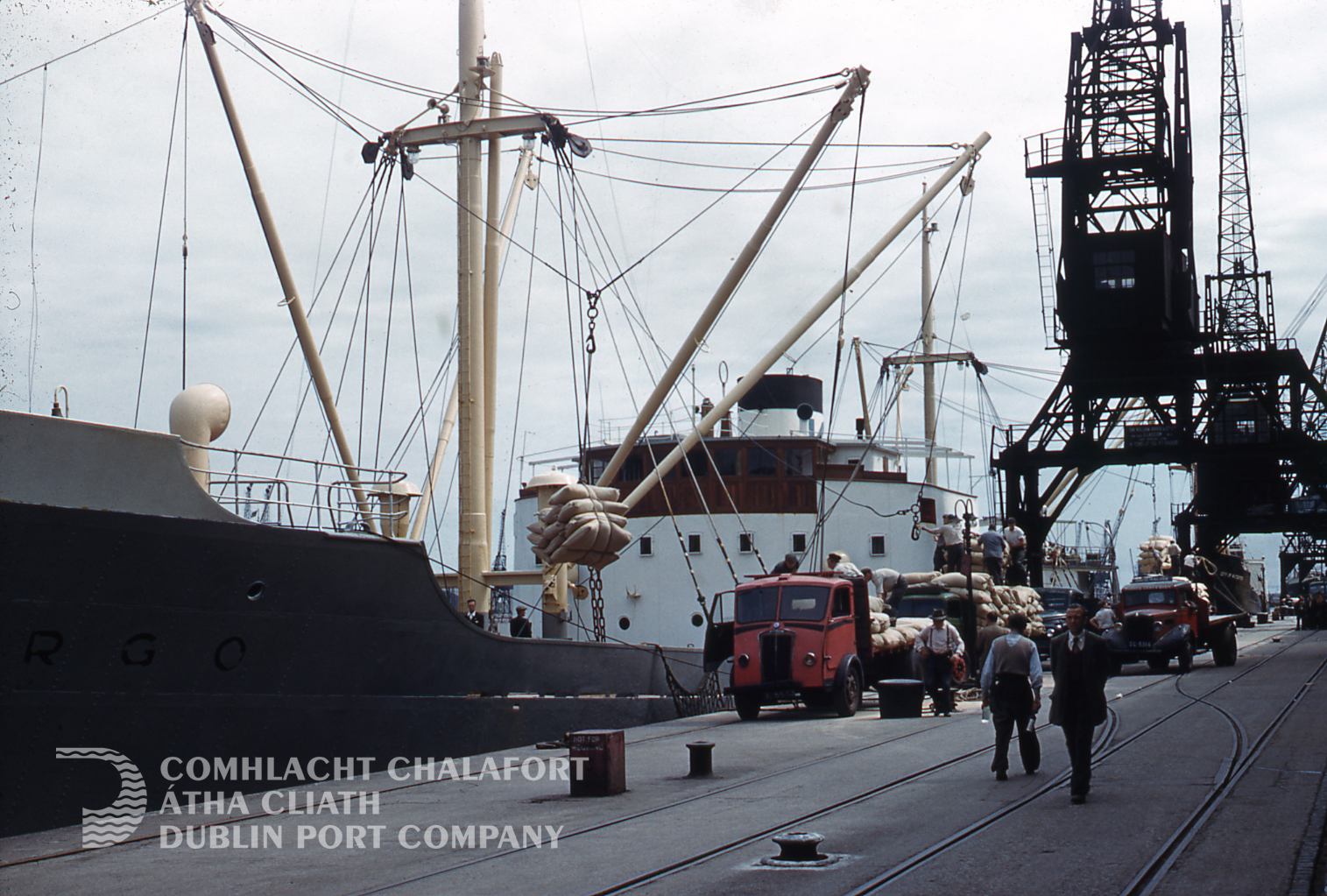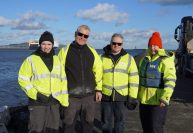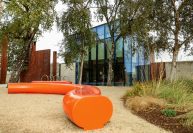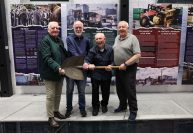MINISTER PASCHAL DONOHOE LAUNCHES THE SUBSTATION AT DUBLIN PORT
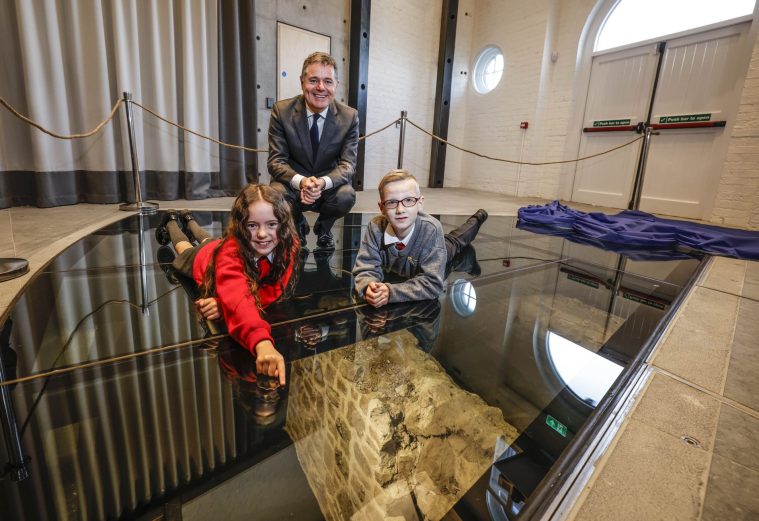
The city’s 18th century sea wall goes on permanent display to the public
All hands on deck as Adam Roche, 9, and Everly Whelan, 9, of St. Joseph’s Co-Ed Primary School launch Dublin Port Company’s new venue the Substation with Minister for Public Expenditure Paschal Donohoe TD. The Substation allows the public to view through a glass floor the 18th century sea wall which gives the East Wall its name. The display is the latest addition to Dublin Port’s distributed museum, a key part of Masterplan 2040’s strategic objective to integrate the Port and the City. Picture Conor McCabe Photography.
The Minister for Public Expenditure, National Development Plan Delivery and Reform, Paschal Donohoe, TD has today officially opened the Substation at Dublin Port, where part of the city’s 18th century sea wall was discovered. It now goes on permanent display to the public at this new interpretive centre, part of Dublin Port’s distributed museum for the city.
The redbrick Substation, built in the early 20th century, which is located on the corner of East Wall Road and Alexandra Road, once played a pivotal role in the early electrification of Dublin Port. The building has been expertly restored and reimagined by the team at Dublin Port – with the help of Dunwoody & Dobson and Darmody Architecture – as a modern interpretive centre that will play a central role in telling Dublin Port’s story to audiences today.
During refurbishment works on site, part of the city’s original sea wall was discovered running underneath the Substation. The 18th century sea wall once served to protect the East Wall from flooding and was a catalyst for the North Lotts reclamation of centuries ago. Dublin Port, together with a multidisciplinary team has worked to preserve and expose the sea wall underneath a glass floor inside the building.
The display will become the latest addition to Dublin Port’s distributed museum, a key part of Masterplan 2040’s strategic objective to integrate the Port with the City. When complete, the redbrick substation museum display will be part of a 6.2km cycle and pedestrian route linking port, maritime and industrial heritage landmarks and vistas from Dublin’s Docklands through the Dublin Port estate and overlooking Dublin Bay. The Liffey-Tolka Project recently acquired its final grant of planning permission and will create a new transformative public realm along a 1.4 km dedicated cycle and pedestrian route linking the River Liffey with the Tolka Estuary through Dublin Port lands on the east side of East Wall Road, passing the Substation enroute to the final destination of the Tolka Estuary Greenway.
At the launch, there was a performance from ANU’s Robbie O’Connor based off a short extract from the highly-acclaimed production The Book of Names, written and directed by Louise Lowe. The performance was a tribute to the dockers who would have gathered in their hundreds next to the Substation every day seeking work on the docks.
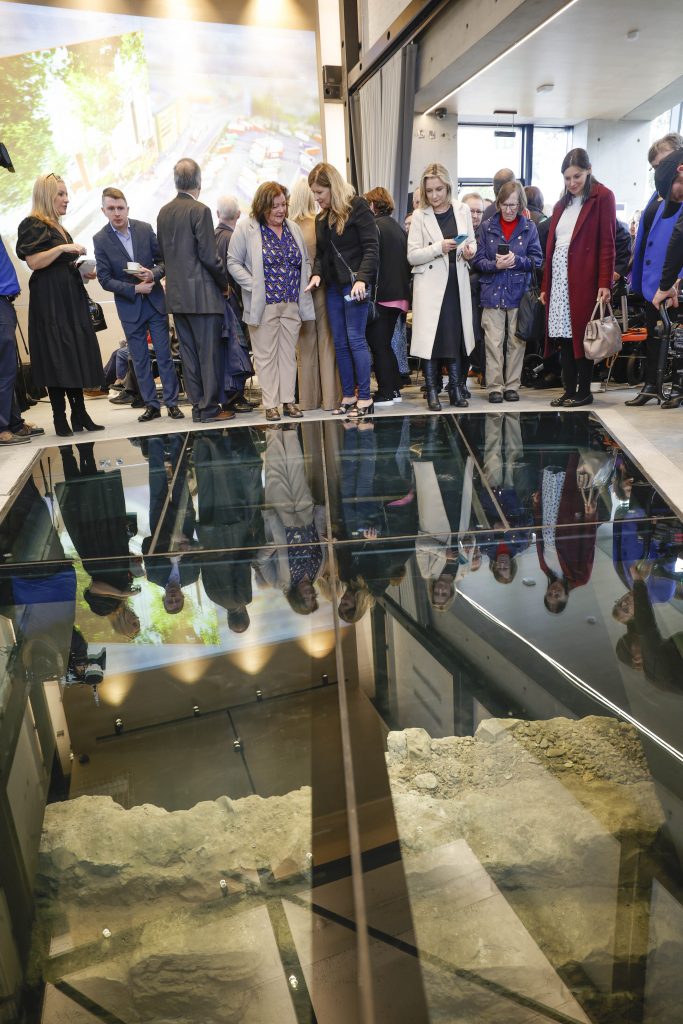
The launch of the Substation took place ahead of Culture Night. Dublin Port will have four walking tours with tour guide Anthony Finnegan, a former Shore Engineer at Dublin Port, and Dublin City Council historian Hugh McGuinness. A plaque honouring Bindon Blood Stoney, one of Dublin Port’s most pioneering port engineers, will also be unveiled at 6pm.
Finally, Dublin Port is proud to welcome Solidarity: The Dockers of Dublin Port, a new exhibition curated by The Little Museum of Dublin which comes to the Substation in November. Solidarity charts the story of one of Ireland’s most fascinating industrial subcultures: the dockers. Their story is one of hardship but also one of humour and resilience. From the great camaraderie to the insecurities of casual labour, and the button system of preferential hire to the introduction of containerisation, this colourful new exhibition charts the story of the dockers.
Minister for Public Expenditure, National Development Plan Delivery and Reform, Paschal Donohoe, TD said:
“I am delighted to be here today to officially open the Substation at Dublin Port, a remarkable project that represents the next step in making Dublin Port a true destination and enhancing the integration of our port with the city. I fondly recall the launch of the Diving Bell in 2015 and I commend Dublin Port Company for continuing to preserve and restore our city’s history with this latest endeavour. The discovery of the 18th-century sea wall beneath this building is a testament to Dublin Port Company’s continued commitment to preserving our rich maritime and built heritage.
“The Substation, with its expertly restored exterior and reimagined interior, will serve as an important interpretive centre, allowing us to share the captivating history of Dublin Port with today’s audiences. It is not only a celebration of our past but also a bridge to our future as we work towards greater connectivity between the Port and the City.”
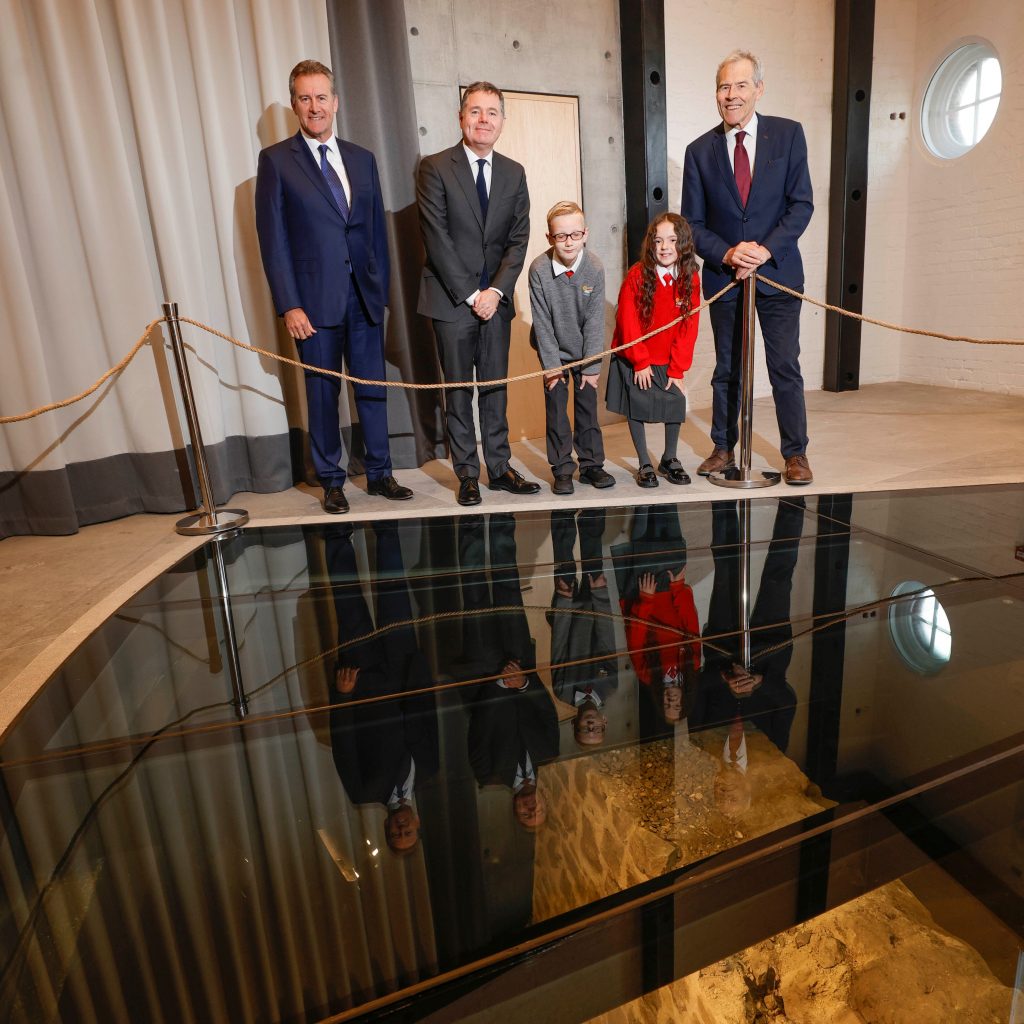
Barry O’Connell, Chief Executive, Dublin Port Company, said:
“Today marks another significant milestone in our journey towards making Dublin Port a destination and achieving port-city integration. The opening of the Substation at Dublin Port, along with the discovery and preservation of the 18th-century sea wall, symbolises our commitment to bridging the past and the present. This redbrick Substation, once a hub of electrification, now stands as a modern interpretive centre, inviting the public to explore and celebrate Dublin Port’s rich history.
“As we continue our efforts to connect the Port with the City, this interpretive centre becomes a vital part of Masterplan 2040, fostering a deeper connection between our maritime heritage and the community. With the upcoming exhibition ‘Solidarity: The Dockers of Dublin Port,’ curated by The Little Museum of Dublin, we celebrate the resilience and spirit of the dockers, adding another layer to the story of Dublin Port. We look forward to welcoming visitors to this unique space and sharing our port’s rich history with them.”
Help us with the Archive
You can help us to preserve Dublin Port’s rich archival heritage by
donating items or seek advice from us on items in your safekeeping.
Get in touch by completing the contact form below.
We’d love to hear from you!
